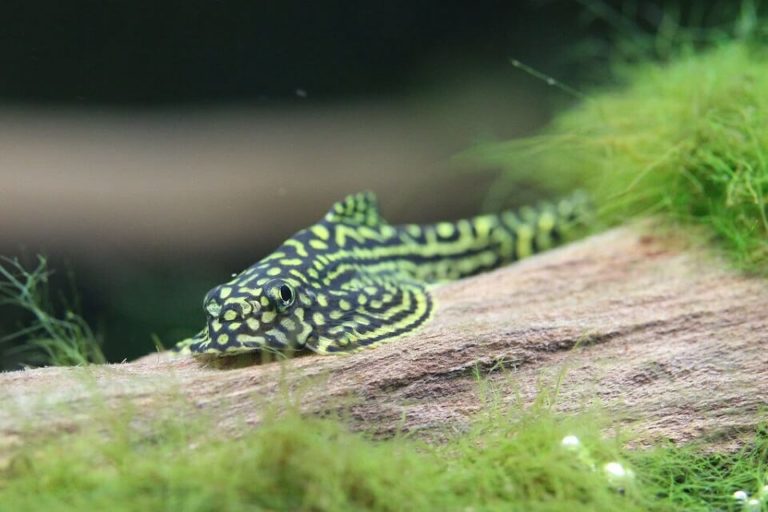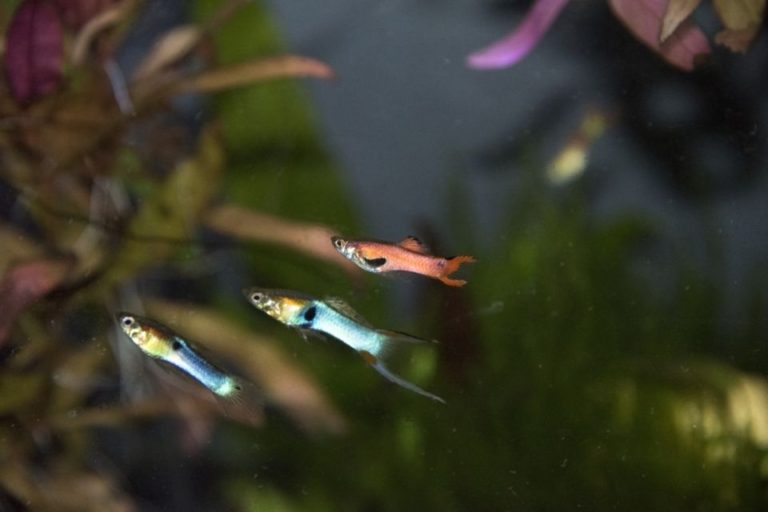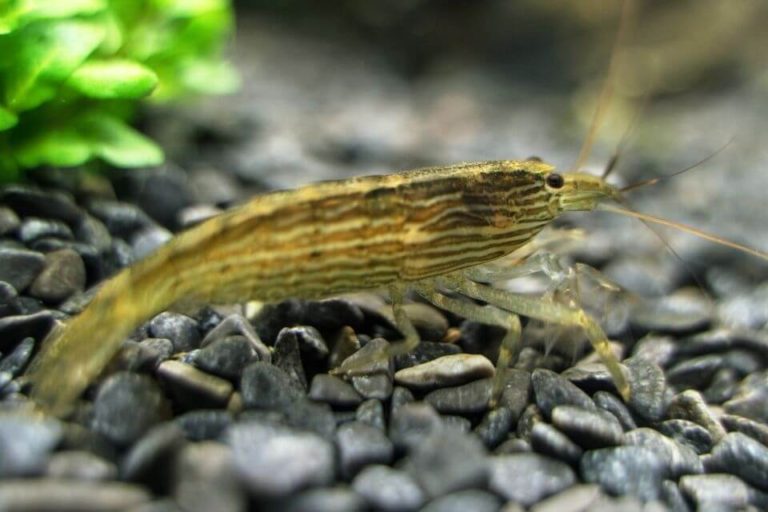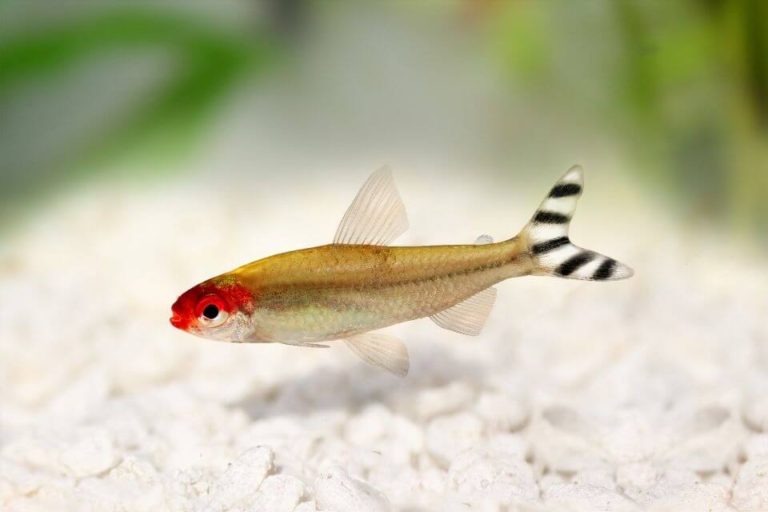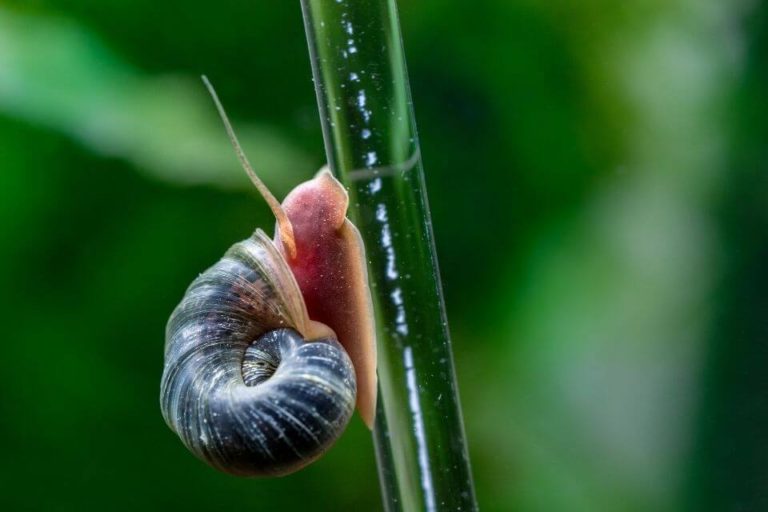Diamond Tetra Care Guide: Best Tank Mates, Setting Up A Tank And Care

Diamond Tetra is the most attractive freshwater fish species that you must have in your aquarium as a pet. Not only as a pet but also as part of interior decoration in our homes and at the workplace.
God’s creation is beyond science; there are beautiful aquatic species, as the hidden Diamond underneath the world takes many to obtain.
For a long time, people have been keeping aquatic creatures as part of their pets and even trophies like Diamond Tetra fish species.
In this Diamond Tetra care article, we will highlight some of the vital information you may need to know about the aquatic diamond.
| Quick Facts: | |
|---|---|
| Common Names | : Diamond Tetra |
| Scientific Name | : Moenkhausia pittieri |
| Family | : Characidae |
| Origin | : Lake Valencia, Venezuela |
| Care Level | : Easy |
| Lifespan | : 3 - 6 years |
| Size (average) | : Up to 2.4 inches |
| Diet | : Omnivorous |
| Breeding | : Egglayer |
| Social | : Schooling fish |
| Temperament | : Peaceful |
| Minimum Tank Size | : 15 gallons |
| Temperature | : 73 – 82 °F (23 – 28 °C) |
| Water Hardness | : 5 - 12 dKH |
| Water pH Level | : 5.5 - 7.5 |
Overview of Diamond Tetra
If illuminated under the right light, Diamond Tetra is illuminated if intensity scales glitters or shimmers like diamond due to its iridescent scale. The biological name for this iridescent scaly fish is called Moenkhausia pittieri and is from the Characidae family.
Its genus name was derived from the zoologist William J. Moenkhaus and denoted the species name from Henri F. Pittier, a biologist. Hence, they gave it the scientific name Moenkhausia pittieri.
However, in English, we call them Diamond Tetra due to their shimmering scales. The name tetra is derived from its tribe ornamental name called Tetragonopterini; hence Diamond Tetra’s name.
Diamond Tetra Size
They are relatively small fish species whose maximum Diamond Tetras size for an adult is about 6cm (2.4 inches) in their lifespan when they are well fed. Their physical length characteristic is what makes it easy to manage them even in a small space.
Hence, it is favorable and much advantageous if you have a larger aquarium or tank. That makes it more fun for them to swim around, thereby making it a spectacular glimmering scene to pass the time or meditate.
Diamond Tetra Lifespan
The average Diamond Tetra lifespan is between 3 and 6 years if you keep them in a tank that is well conducive to survival despite them being hardy to withstand a lot of conditions.
However, like humans, the Diamond Tetra also needs special care and quality of life to guarantee its maximum lifespan.
Therefore, you need to notice what factors make them comfortable and favorable to keep them healthy and stave off diseases. Factors that may have an impact on the Diamond Tetra lifespan includes;
- The condition of the tank
- Their population
- Food and feeding pattern
- The condition of water
- Disease
- Lifestyle
Diamond Tetra Typical Behavior
Diamond Tetra is one of the most peaceful fish species, making them good tankmates especially like Rasboras, Danios, other Tetras, and Crabs.
However, they tend to be aggressive, which unleashes their worst predatory behavior of being a fish nipper when they are overpopulated in the same tank beyond 6 to 9 specimens.
When their school population is under 6 specimens, they tend to be a little bit skittish. Therefore, if you intend to keep them in large numbers, ensure you keep them in small groups of 5 to 6 specimens.
Other typical behaviors you may witness keenly while observing in the water tank includes;
- It is slow eaters and not picky, but when they are active, they eat a lot.
- Diamond Tetras are slow swimmers
- Tend to shy away from overly bright lighting.
- Hardy and adaptable to their capability to withstand acidic water rich in tannins and leafy litters.
Characteristics of Diamond Tetra
Any living thing is created unique, making it easy to identify them even if they are mixed with other species, and many factors will help you identify them.
However, with Diamond Tetra, you can even easily know which one is male or female due to the slight physical characteristics, which we will know more about later when we are almost winding. For now, let’s understand their general physical characteristics that you will easily notice, even if it is your first time to come across them in the aquarium or tank.
Appearance, Colors, and Special Markings
As mentioned earlier, they are other types of Tetra species. All Tetra has a similar laterally compressed body but what makes them different is that the Diamond Tetra is stickily-built species. Their body is a bit larger compared to other tetras.
However, their iridescent and shimmering scales make them even more unique if it finds the right light illumination. Their scaly reflects different colors, from green, blue, orange, and gold. However, the color reflection intensity gets more vibrant and sharp as the fish ages, meaning it is getting to its best like wine, but while a juvenile, their sparkling scales are not easy to notice.
Further, all Tetra species have a long anal fin, but their fins are semi-transparent with a subtle violent tone, making it attractive when the fish swims around. Lastly, the upper half of the eyes of Diamond Tetra is characterized by a unique accent of a red splash.

Diamond Tetra Care and Habitat Setup
All aquatic life species have many difficulties surviving outside the natural habitat that naturally balances itself to sustain them for survival in such conditions.
Hence, when you decide to keep Diamond Tetra as your indoor aqua-pet, you should ensure you provide a favorable and reliable environment like their natural habitat for convenience and comfort.
Therefore, you should strictly adhere to essential factors for them to thrive well. While adhering to these factors, you should also ensure it’s part of your daily life routine because your pet is part of your life, relationship, and family that requires maximum attention. Below are some of the factors you should consider.
They include;
Tank Size
Even though Diamond Tetra are believed to like shallow waters and are moderate swimmers, it is worth noting that the tank’s size also has an impact on their comfort and movement. Therefore, the large the tank, the more freedom of moving around.
Hence, the tank should be at least have a capacity of about 15 to 20 gallons which is recommendable for a smaller group of 3 to 5 fish.
The reason for the tank size recommendation is that when they are active, they swim a lot, hence needing a big tank for more swimming space. Besides, when the tank is also big enough, it will be easier to maintain the water conditions.
Tank Setup
Because these species are naturally adaptable to aquatic life, you should ensure you provide them with a similar environment that is well known to them.
This provides a sense of belonging and security when they are underwater because it is their home, breeding ground, and social culture.
Therefore, when setting up the tank, you start with the river sand substrate to provide a natural feel underwater. Then add driftwood and some twisting branches to mimic the aquatic life’s natural hiding ground.
After providing an aquatic niche of sticks and sand in the tank, introduce a low light setting that is a little bit shadowy or dim to enhance darkness, bringing out the iridescence of their scaly body.
You should avoid providing excess light because Diamond Tetra does not like bright light; instead, it prefers a low light setting and densely decorated surroundings.
Suitable Plants
Suitable plants for decorating inside the tank use dried leaves of beech or oak leaves, the barks of beech plant that is thoroughly dried, and twisted roots to provide a natural feel of the aquatic niche.
Then let the wood and the leaves discolor the water until it resembles a weak tea color. After the water is discolored, remove the old leaves every week to avoid running foul, rotting in the water, and immediately replace them.
Do not forget to plant live aquarium plants when you set up your freshwater tank. Water Wisteria, Java Moss, and Hornwort would be great choices to cover tank edges.
Water Temperature and Parameters
You will maintain the water levels, but you should also consider checking the water temperatures and their parameters because it determines the tank’s conduciveness.
For instance, Diamond Tetra thrives best in warm water that is slightly acidic (6 to 7.5) despite being adaptable to alkaline water. The water should be slightly acidic because it helps to bring out the beauty of their scaly body.
To have an easy time monitoring the state of the tank and know when is the right time to adjust the water temperature and its parameters, you should use an aquarium test kit that is reliable and accurate.
Below are some of the main water parameters you should adhere to;
- Water hardness: 5 – 12 dKH
- pH levels: 5.5 – 7.5
- Water temperature: 73 – 82 °F (23 – 28 °C)
- Moderate water movement
- Breeding temperature: 78 – 84 °F (26 – 29 °C)
Origin, Distribution, and Availability
The origin of Diamond Tetra is from Lake Valencia and surrounding water bodies, located between Carabobo and Aragua’s states in the Northern area of Venezuela.
Still, you may also find them in the waters of Lake Rio Blue and Lake Rio Tiquiriti in the same region.
However, Diamond Tetras’ availability is becoming alarming almost to its extinction due to the pollution from industrial and agricultural waste and activities.
Water pollution makes these fish, aquatic environments to be inconducive for their survival since they breed well in areas that are vegetated, shallow water bodies, and slow-moving tributaries.
What Do Diamond Tetras Eat? (diet and feeding)
The Diamond Tetra is a natural omnivorous, which makes them not choosy and easy to please. They eat everything from plant matters to small insects; hence, finding appropriate food is not a big issue to ponder.
Since they are like other pets in our homes, you should feed them with well-balanced nutritious food that meets their nutritional needs.
Their favorite snack is a plant-based protein, and they are fond of daphnia, bloodworms, and brine shrimp. For vegetables, lettuce is their favorite, and for protein foods, go for live foods, dried and freeze-dried proteins.
To bring out their natural coloration, feed them with vitamin products.
However, it is advisable to feed them well with leafy or vegetable supplements to discourage them from eating aquarium plants and ensure you feed them multiple times per day.
Common Diseases of Diamond Tetra
Diamond Tetra is a hardy and resilient species that can withstand many conditions; therefore, it is rare for them to succumb to health issues.
But their immunity is not resistant to all diseases, especially aquatic diseases like bacterial diseases, parasitic infections, and many more.
However, most of these diseases are avoidable if you properly maintain the tank’s conditions. Also, feed them a well-balanced diet, and monitor the water parameters regularly.
What makes Diamond Tetra unique when it comes to disease control is that their hardiness often reduces disease spread.
Secondly, immediately you notice the symptoms earlier, you can quarantine the infected one to control the disease’s spread to others.
What are the Causes of Diseases?
Since you do not have a guarantee against any disease that can infect the Diamond Tetra species. The following are the predisposing factors to health and diseases problem;
- Keeping sensitive fish breeds.
- The tank set up components like substrate, plants, and decorations which may be infected or carry bacteria to the water
- Lack of a well-balanced diet and poor feeding habit
- Poor maintenance of the tank induces stress to the fish makes them easy to acquire diseases
What diseases are Diamond Tetra prone to?
- Skin flukes
- Ichthyobodo infection
- Bacterial infections and diseases
- Parasitic infections
Diamond Tetra Gender Differences
As mentioned earlier that every species have differences in their physical characteristics; hence, in this article, we will ensure you are not missing out on every detail you need to know about Diamond Tetra.
When you come across a female one, it is characterized by its short dorsal fin and is heavily bodied than males. In comparison, the male counterpart has long and pointed fins that are noticeable.
Therefore, the sexual dimorphism of this species is easy to notice during the breeding season.

Breeding The Diamond Tetra
When it comes to the breeding of Diamond Tetra, it is a bit challenging but moderately easy. Because for breeding to occur, you have to consider pairing the same size and age which requires ample time for you to come up with the compatible mate.
The most you make a mistake of mismatching them probably breeding will not be successful. Tank preparation and precautions to consider before spawning.
Besides looking for a perfect match, there are also tank preparations and precautions you must follow before spawning takes place.
Preparations and Precautions for Breeding
- To get the best number of fry, you should use a separate breeding tank that is at least 20 gallons which will be the spawning tank.
- Set the spawning tank’s temperature around 78 to 84 °F (26 to 29 degrees Celsius) and provide clumps of spawning mops, which will be where the female will lay her eggs to protect the eggs from angry adults members. Or you may use a layer of mesh with enough spaces that are wide for legs to pass through and able to prevent the fish from escaping through it.
- Ensure the water is soft and acidic with a pH of 5.5 to 6.5 and a hardness of 4 dGH or less. Then introduce a sponge filter for filtration and gentle water flow.
- For optimal spawning, you should separate males and females into separate tanks before the breeding time arrived and fed them with a well-balanced feed with live foods for about 9 to 10 days.
- After the 10th day, select breeding pairs and transfer them to the breeding tank. However, when selecting a breeding pair, ensure the female belly is well-rounded, meaning she is full of eggs and ensures the male is the most colorful for quality breeding purposes.
- To induce spawning, start with a dark tank and increase the light level dimly or at a low light setting. However, you should not be in a hurry to increase the intensity because it may spawn immediately or after a day or two later.
- While in the tank, the male does follow the female around to release sperm and fertilize eggs released by the female.
- After the successful spawning, remove the parent in the spawning tank to avoid feeding the eggs.
The fertilized eggs take about 24-36 hours to hatch.
How to Feed The Fry After Hatching?
The fry grows very fast because immediately after hatching 3 to 4 days later, they can swim freely and are capable of feeding. You should therefore feed the fry with fry infusoria-type foods until they start feeding on Brine shrimp or Micro worms.
Fry do grow very fast and even look like young adults if compared to the mature ones; however, they do not possess the Diamond Tetra physical appearance until they are about 9 months old.
Diamond Tetra Tank Mates
Diamond Tetra species is the most peaceful aquatic pet with little aggression when they are well balanced in the tank. That behavior makes them have a high tolerance to living with other mates so long as they are not the prey.
Below are some of the pets you may include in the tank that includes;
- Peaceful bottom dwellers
- Guppies
- Cory Catfish
- Molly Fish
- Tetra species
- Danios
- Rasboras
Are Diamond Tetras Fin Nippers?
Yes. They exhibit semi-aggressive to aggressive behavior as a reflex to threat, especially among the male members if they are more than 3 in the tank. Hence, when introducing them into the tank, consider the balancing ratio of female to male.
Are Diamond Tetras Aggressive?
When kept in a school of 5 to 7 members, they are at peace because they like being in an odd number of population and still cohabitate with others very well.
However, you should not make the mistake of including them in a large number of groups. This is because they may become aggressive and start nipping each other in the tank.
Therefore, their population should always be under control.
Final Thoughts
Diamond Tetra is a precious fish species that need to be protected through all measure that would keep them alive for generations.
However, with the rate of agricultural and industrial pollution, aquatic life will face extinction while we can adhere to measures that protect them. Their future presence is actually our key responsibility.
That begins with controlling water pollution and maintaining a green society for everyone.


